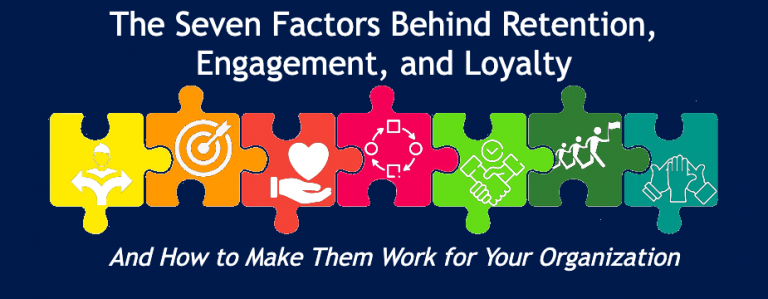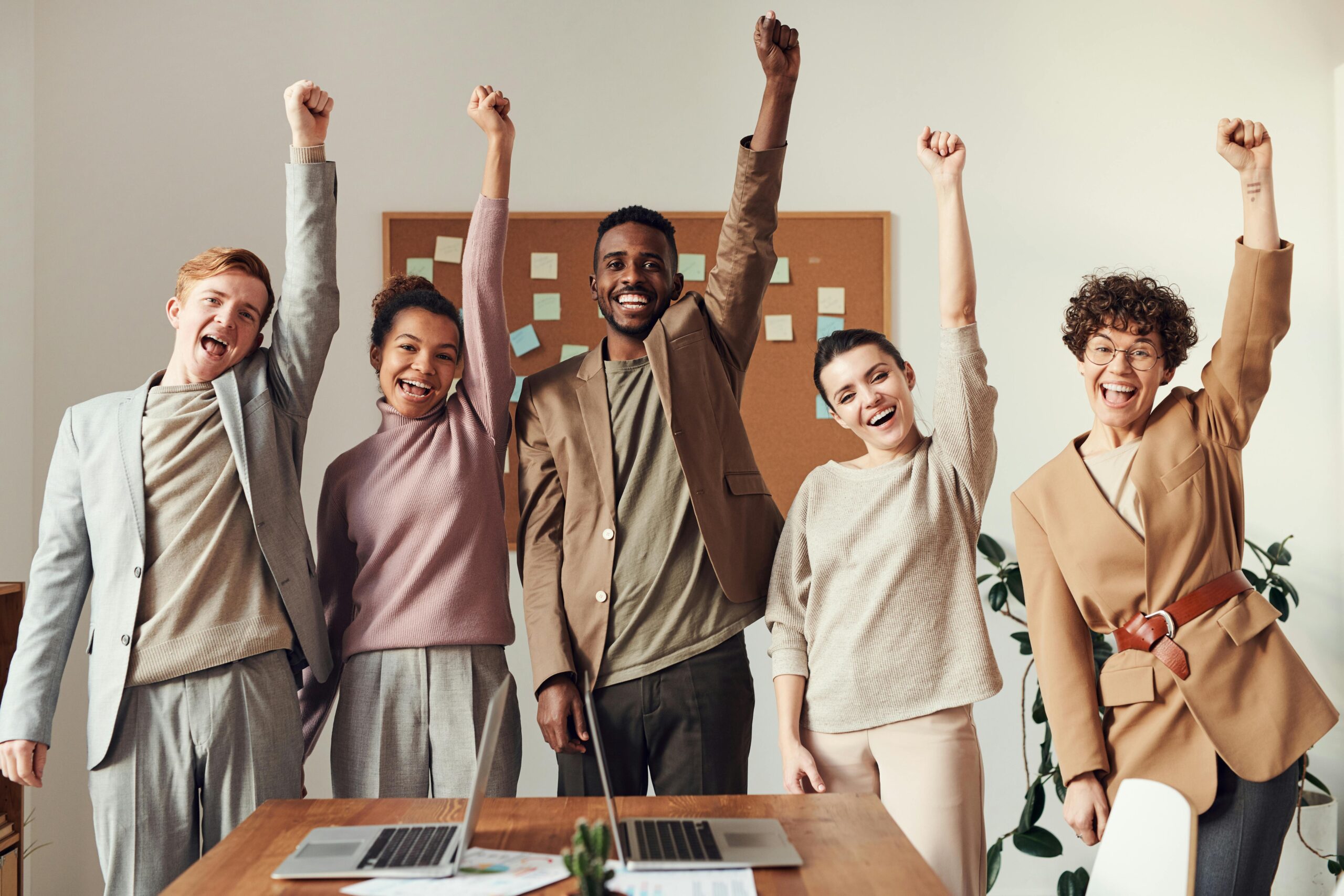Regardless of what the economy does in the near term, workforce retention and engagement challenges will be part of life for years to come. Fortunately, there are positive ways employers can respond to these issues that will benefit everyone involved.
Slower population growth combined with a lower labor force participation rate (due to the aging population in the U.S. as well as in most developed countries) will keep conditions tight in the labor market. Organizations of all types will be challenged to recruit and retain talent.
That means even with a slowing economy, phrases like “the Great Resignation” and “quiet quitting” will remain concerns for business leaders (as well as their peers in the government and nonprofit sectors). What’s behind these challenges, and how can organizations respond? A number of recent research studies identify the underlying factors.
Recruitment and Retention Challenges
People keep quitting at record levels, yet companies are still trying to attract and retain them in the same old ways. Research from McKinsey shows that 40% of US workers are “somewhat” to “very” likely to leave their current jobs within the next six months. How can employers keep them?
Of course, considerations like total compensation, workplace flexibility, and leadership matter. But employees also place a high value on opportunities for career advancement (professional development), meaningful work (giving back), and support for health and well-being (fun, workplace relationships).
Another McKinsey study suggests that part of the reason so many employees are leaving jobs is that returning to the office after the pandemic-caused disruption of the past two years is somewhat like returning from an overseas military deployment. Employees crave the normalness of pre-pandemic life, but going back to the office feels awkward. It’s not the same. Employers need to recognize this, take steps to address it, and help employees adjust to workplace changes.
As noted here previously, team building has never been more critical than today, as businesses struggle with the “new normal” of the post-COVID economy. Team building activities should be job #1 in the post-COVID return to work—whatever that return looks like. There are lots of options for productive and fun programs, in-person or virtual, to help get your team back together.
A third study, this one focused on how to play the new talent game and win back workers, notes that “Nearly half of the employees who voluntarily left the workforce during the pandemic aren’t coming back on their own. Employers must go and get them.”
There’s a lot of overlap between the reasons workers leave their jobs and why they choose new ones. That is to say, they are likely to leave jobs that lack certain characteristics and are attracted to roles they believe offer those attributes, among them: opportunities for career advancement, meaningful work, reliable and supportive coworkers, caring leaders, and support for employee health and well-being.
Engagement Challenges
According to reporting from Axios and Gallup, “At least half of American workers say they’re ‘quiet quitting’ — performing only the tasks they’re required to, giving up on going ‘above and beyond’…The proportion of ‘actively disengaged’ workers is now at 18% — the highest it’s been in nearly a decade.”
The number one reason? Poor leadership. As Axios also observes, “The least effective managers have three to four times as many people who fall in the ‘quiet quitting’ category compared to the most effective leaders.”
That contention is further supported by reporting from SkillSurvey, finding that “those who are doing the ‘bare minimum’ at work—meeting the criteria for ‘quiet-quitters’—now comprise 21% of the US workforce.”
The least engaged employees blamed micromanagement along with a lack of guidance and trust from leadership for their attitude towards work. But among the most engaged workers, notes SkillSurvey, “the one engagement driver that correlated the strongest with manager ratings of their work behavior was how supported the employee felt by their manager.”
Loyalty Challenges
In summarizing research from Great Place to Work, which publishes the annual list of the 100 Best Places to Work, the Miles LeHane blog notes there are several reasons why workers remain loyal to their employers: good pay and benefits, transparent communications, strong leadership, and the opportunity for advancement.
But the number one factor underlying employee loyalty is purpose—the degree to which an employee feels that their work has special meaning and isn’t “just a job.” People want to feel that they are giving back to their communities, and that their employer has a mission and vision beyond simply making a profit.
The Seven Factors Behind Retention, Engagement, and Loyalty
Examining all of the research cited above, these seven factors overlap in helping organizations attract, retain, and get the highest levels of performance out of their workplace talent:
- Opportunities for career advancement
- Meaningful work/sense of purpose
- Support for health and well-being
- Adapting to change (the “new normal”)
- Reliable and supportive coworkers
- Strong, effective leadership
- An inclusive and welcoming community
Here’s how employers can improve in all of those areas, and specifically how to use team building and professional development programs to help address each of those seven factors.
Opportunities for Advancement
While this factor certainly isn’t new, the way we need to think about it has changed, according to team development professional Steve Ockerbloom. The days of working for only one or even a few employers over the course of one’s career are long gone.
According to data from the U.S. Bureau of Labor Statistics, the median job tenure for all employees is 4.1 years. But that number varies considerably with age. Workers aged 25-35 have a medium tenure of just 2.8 years, and the average person works for five different employers during the time between graduating from college or trade school and celebrating their 34th birthday.
As Steve puts it, “The classical way managers think about providing opportunities for career advancement is in the context of the good of the organization. That’s fine, but today’s younger workers are asking about WIIFM (what’s in it for me?). The ‘good of the team’ is all well and good, but I may not be here very long.
“So, in thinking about how to motivate and retain people, managers need to be thinking a lot more about their employees’ individual goals. Are they given opportunities to learn a new skill, become subject matter experts in a particular area, or do work that really aligns with a strength or passion of theirs? Leaders need to think about that a lot more.”
Professional development programs from Best Corporate Events help managers develop the skills and get truly committed to figuring out the WIIFM for their teams. Our DiSC Profile Workshop helps leaders understand the motivational and communication differences that are important among their people.
Work with Purpose
In his book, Drive, bestselling business author Daniel Pink identifies what he calls the three elements of true motivation:
- Autonomy: the sense that we are in control of what we’re doing;
- Mastery: the ability to get better and better at something; and
- Purpose: the idea that what we’re doing isn’t just a series of tasks, but it is actually fulfilling to other people on our team or in our community.
While there are many ways organizations can integrate a larger purpose in their mission and vision, one popular, effective—and fun—way is through corporate social responsibility (CSR) programs. Activities like our Bike Build Donation®, Build-a-Wheelchair, or other programs that benefit local or national charities create a sense of purpose. They demonstrate to employees the importance their leadership places on giving back to the community, which is incredibly motivating.
On the professional development side, there’s our Competition to Collaboration program. As Steve explains, “When people have a chance in that program to help each other out, to provide information that’s going to set up other people for success, and when people feel a shared sense of success as a team, it can be incredibly engaging. Participants make the connection to the purpose-driven work they are actually doing.”
Support for Mental Health and Well-Being
Across society, there’s an increasing awareness of and importance placed on good mental and physical health. While going to work is a lot different from going to the gym, it shouldn’t counteract efforts made to maintain a healthy lifestyle.
Forbes points out, “With many people spending one-third (or more) of their day working, the workplace plays a significant role in employee health. Employers who prioritize both mental and physical health within their companies’ cultures through health and wellness programs can provide a strong foundation for employees to thrive.”
Again, there are many ways for employers to promote well-being at work, from managers checking in on stress levels to formal wellness programs to the use of apps such as BetterYou.
Professional development programs like our Manager’s Guide to Business Coaching teach proven coaching practices that can strengthen relationships, bolster trust, and realize the benefits of open and positive communication in the workplace. Team building programs, particularly CSR activities, also contribute to workplace well-being by reducing stress, getting participants active, developing healthy workplace relationships, and giving employees a sense of larger purpose. And, they’re fun.
Adapting to Change
Though the phrase “new normal” has been grossly overused, it can’t be ignored. Workplaces have changed for almost everyone. Some employees are still dealing with changes in their structure of work: they are going back to the office full-time, taking roles that are fully remote, or adjusting to a hybrid work structure.
Significant turnover means many people are collaborating with new coworkers. Many businesses are still struggling to recruit enough workers, which means current employees may be asked to take on more tasks.
Management support is the most important element in managing change. But team building programs can also play a beneficial role in terms of building relationships with new team members, welcoming new people to the team, improving communication and collaboration, and jump-starting conversations about working together effectively in this new environment. Programs like Momentum challenge participants to collaborate and strategize, reflecting real-life challenges in a fun and engaging way.
And, of course, team building programs can be delivered in the format that works for your work environment, whether that means in-person, virtual, or hybrid events.
Reliable and Supportive Coworkers
As noted above, the combination of pandemic-caused workplace changes and ongoing labor shortages means that many employees are being asked to do more, to take on additional tasks at work. In this environment, it’s vital that everyone is “pulling their weight” in order to make the team successful.
There are many different types of negative issues that may arise among coworkers, but two that stand out are bad attitudes and slackers. Steve refers to employees with corrosive attitudes as “negative viruses.” These are people who are constantly whining, complaining, and seeing the glass as perpetually half-empty. Like a virus, left unchecked, their bad attitude can infect others.
Slackers (who may be “quiet quitting”) put in the absolute minimum level of effort required. They’re unhelpful to coworkers, and often leave it to other employees to pick up extra tasks to compensate for their poor performance.
Team building activities can play a powerful role in counteracting both of these headaches. As Steve points out, positive viruses can be infectious as well. “When people exude positivity, it spreads tremendously well to others. One of the great things about team building activities is that they create positivity, which can be incredibly productive.
“To pick one great example, our Igniting Team Performance Series™ does more than enhance individual and team performance; it ‘infects’ people in a good way with positive energy, good feelings, and great experiences that carry over into the workplace and last a long time.”
Programs that help counteract quiet quitting and improve team collaboration include Bridge to the Future and Pipeline. As Steve explains, “In Bridge to the Future, each team is split into smaller groups, each charged with building a section of a bridge built out of cardboard and duct tape that needs to be strong enough to hold the weight of the entire group standing on it. The thing is, my section can be great, but if another group doesn’t make the effort or do their part, the bridge will completely collapse.
“In our Pipeline activity, the objective is to transport a series of marbles dropped from above and continuing along sections of the pathway that must perfectly connect with each other in order to eventually guide all of the marbles into an end container.
“What’s great about both activities is that if somebody isn’t doing their part, or if a team of people isn’t really talking about how to connect and move things forward, it highlights clearly how they’ll fail to reach the goal. They’re not going to get (that golf cart) their entire group across the bridge or the marbles into the end container.
“These activities put the failure of one team to do their part into stark visualization. It’s not just that metaphorical idea of, ‘I’m just working in my department or my office, and that’s not going to affect anyone else.’ I can actually see the results right there.
“And what’s most powerful is we do a debrief on the other side about those themes. We have conversations about how we set up each other for success, and how we can make sure everyone is doing their part to help the team reach the end goal.”
Strong, Effective Leadership
As noted in Forbes, “It’s almost a cliché to say that employees don’t leave companies; they leave bad bosses. However, this happens all the time. A top talent will resign, and in the exit interview, it’s confirmed that their manager was the root cause of their departure.”
This is certainly backed up by research from McKinsey, Gallup, and others (and for many readers here, likely their own experience).
As the Forbes article continues, “Managing people seems easy from afar. It’s actually a difficult skill…When you’re in a management position, there is an initial belief that your staff will automatically respect, listen and follow your directions…It’s not that simple, and it hardly ever works out that way. In fact, it’s exceedingly difficult to earn the respect, admiration, and loyalty of your team.”
The good news is that leadership is a skill that can be taught and learned. Becoming a great leader, like excelling at a sport, requires a combination of instruction in the basics and then ongoing coaching to reach ever-higher levels of performance.
Professional development programs like Emotional Intelligence Training combine training in essential skills with ongoing learning and coaching sessions to help individual contributors make the transition to effectively getting work done through others.
An Inclusive and Welcoming Community
Starting a new job is often difficult and awkward. People are more likely to join an organization if it has a structured onboarding process in place, and more likely to stay in a job where they feel welcome and supported.
Unfortunately, employers don’t typically do a great job of making new employees feel welcome and comfortable with their team—and they pay for it in the high cost of turnover. Research shows that 22% of new employees leave within six weeks of being hired, 30% within 90 days, and 50% within the first two years.
These statistics bolster the case for making team building part of your new employee orientation process. Team building helps make new employees more productive, faster (as well as happier in their new roles) by breaking down barriers, aligning actions with team goals, building relationships with coworkers, and creating shared experiences.
While there are lots of great options for new-employee team building activities, Steve recommends CSR programs. “When you’re part of an activity that is giving back to the community—whether it’s something like Bears and Blankets for children who are hospitalized or in crisis centers, or Donation Nation Care Packs for homeless shelters or nursing homes—that creates a strong, lasting connection and powerfully emotional shared experience with coworkers.”
In diverse work environments, the experience of working together for a great cause helps people look beyond their differences and focus on their efforts to collaborate in accomplishing something very positive.
Wrapping Up
With slow projected growth in the labor force over the next several years, businesses and organizations of all types will face continued challenges in attracting, retaining, and engaging talented employees.
Fortunately, the factors that most strongly influence employee engagement (or the lack of it) are well understood from research. Enterprises that invest in professional development and team building to improve the quality of their leadership and team collaboration will win the battle for talent and continually improve their operational performance.






